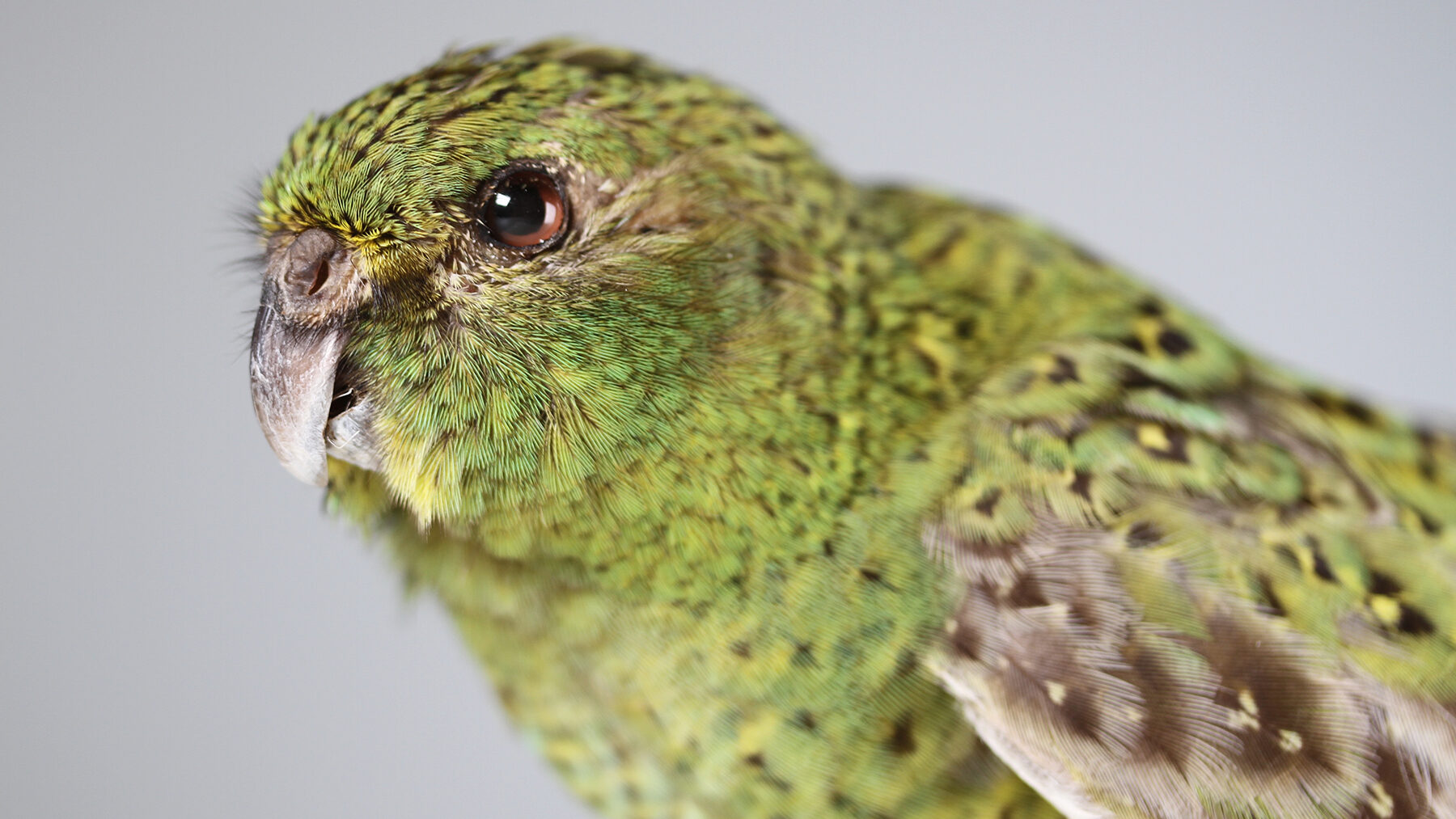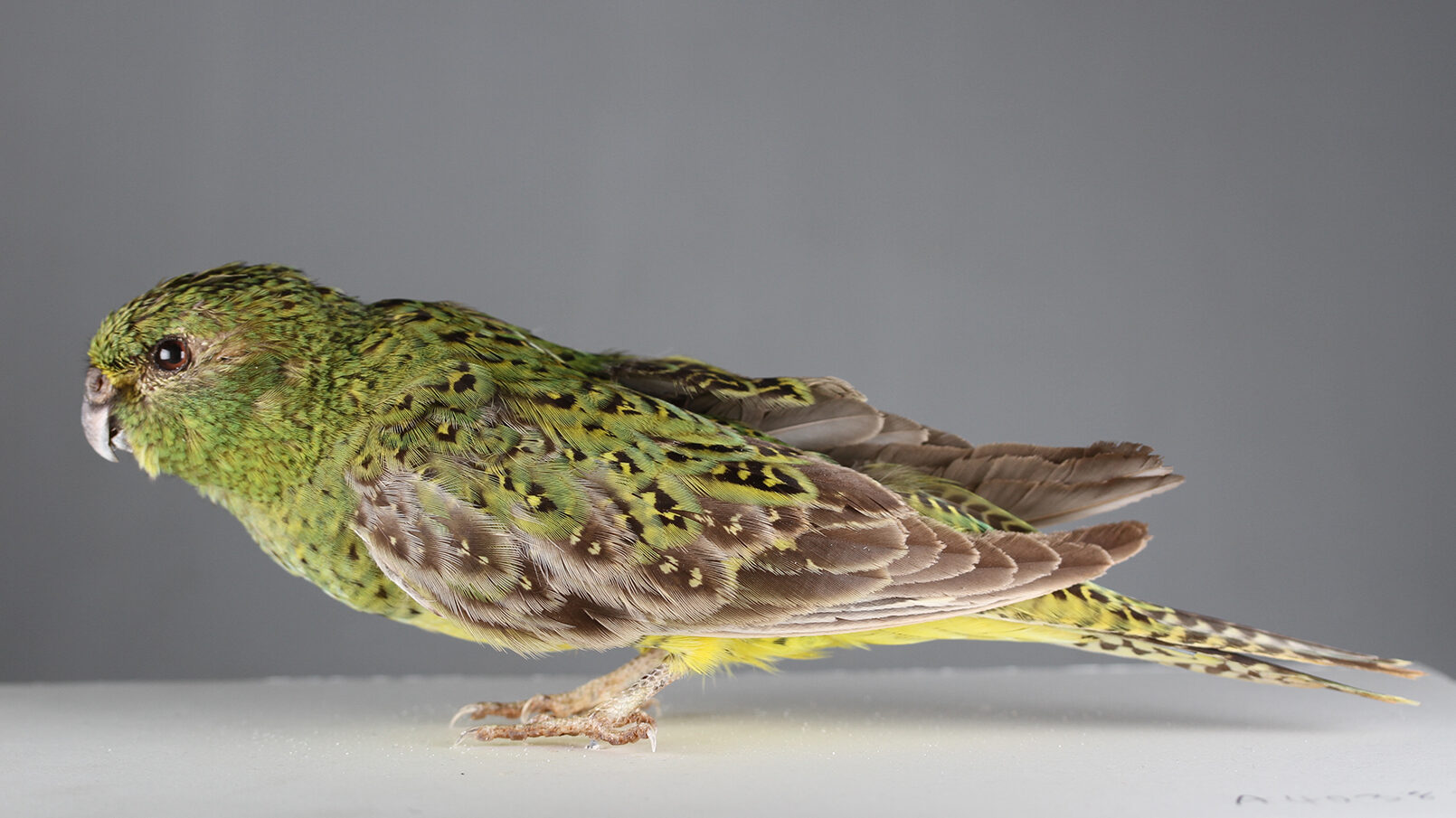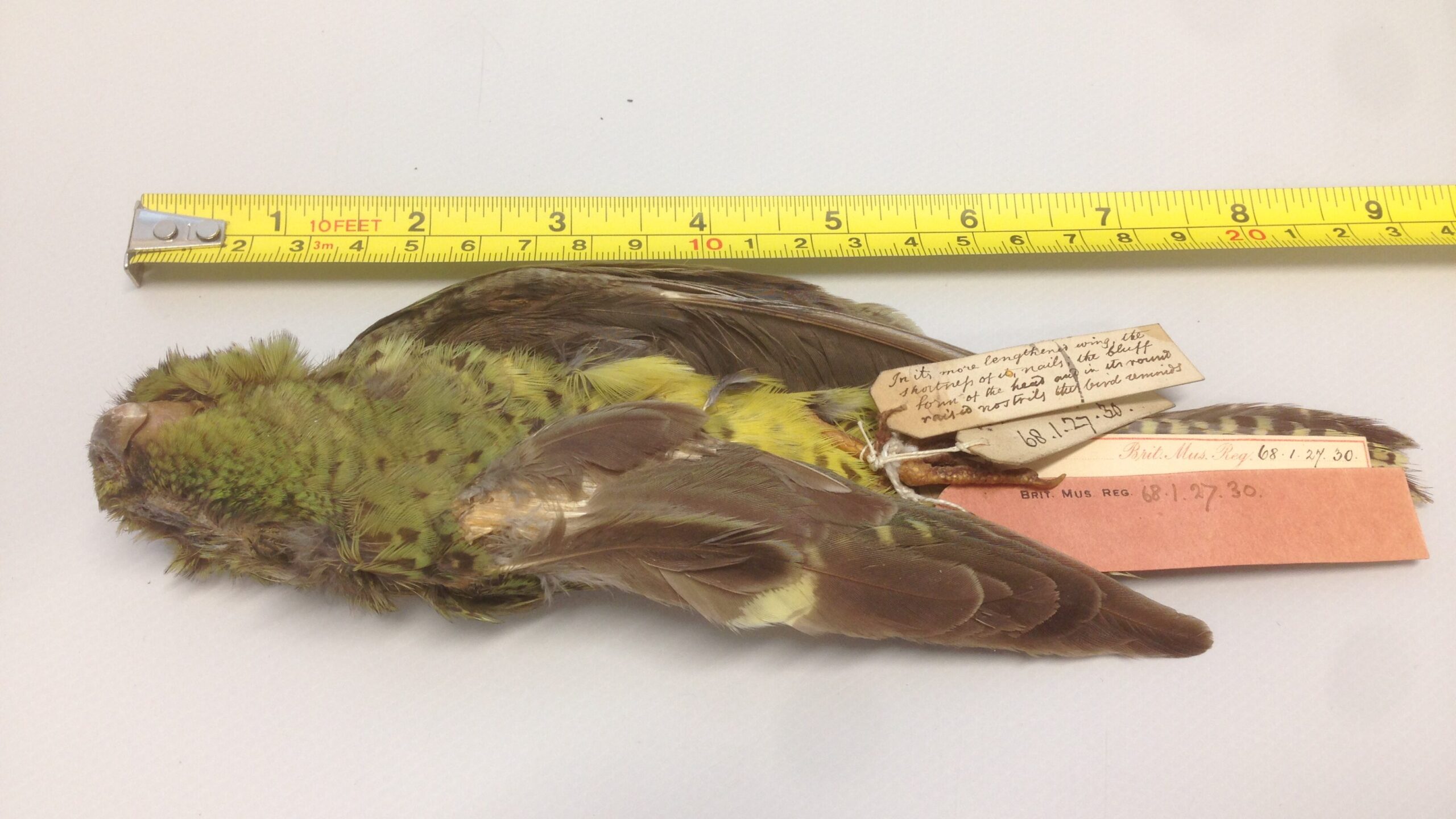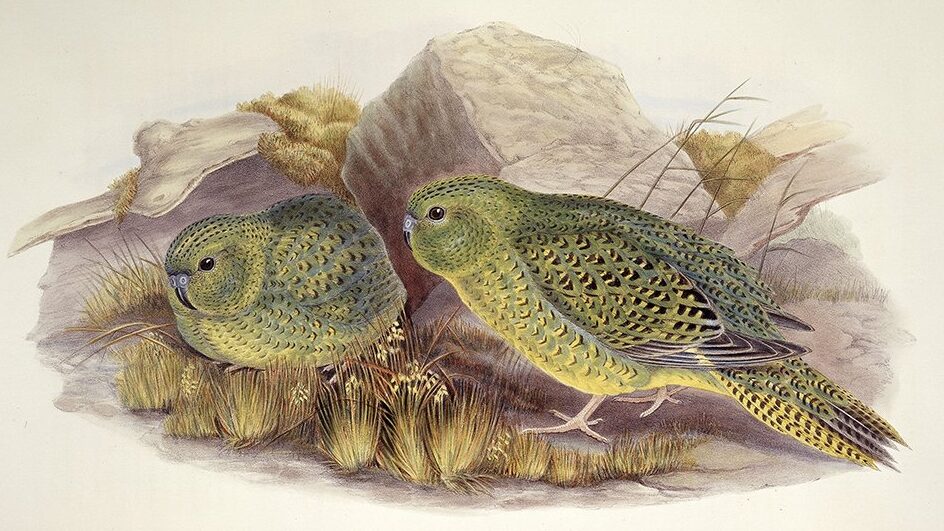Once thought to be extinct (for 100 years!) – and currently listed as Critically Endangered – the night parrot (Pezoporus occidentalis) is one of modern Australia’s most elusive creatures.
Sightings of the bird are rare, for a number of reasons: there are so few of them; they are nocturnal; they inhabit some of the harshest climates in the country; and, they are well-camouflaged – their yellow and green markings allow them to hide in their spinifex habitat.

First discovered by Europeans in 1845, night parrots were once widespread throughout arid Australia, but numbers soon plummeted with the introduction of predators such as cats and foxes.
The species is now known to only inhabit very localised parts of south-western Queensland and Western Australia, explains Dr Leo Joseph, Director of CSIRO’s Australian National Wildlife Collection.
“A couple of dozen scientific specimens were collected during the 19th century, and one more in 1912. Then a specimen was found in 1990, in south-western Queensland.
“Live birds were reported from the same area in 2013, and a live parrot was finally caught and tagged in 2015,” he says.
But despite these, and a string of other recent sightings, the estimated number of night parrots in the wild remains a staggeringly low 40-500 individuals, says Dr Kenny Travouillon, Western Australia Museum’s Acting Curator of Ornithology.
“Even though there is a [confirmed] population in Queensland, and one in WA, the number of individuals sighted is relatively low. So those estimates are still standing today, and it is hard to be able to challenge these estimates until further populations are found in other parts of Australia,” he says.
So, with the chances of ever finding a night parrot in the wild so incredibly rare, the best chance of seeing one up close is to view a specimen.
And now, WA Museum Boola Bardip, opened in 2020, is home to the best-preserved whole specimen on display anywhere in the world. It’s also only the fourth complete specimen ever collected in WA, with the other three all in overseas museums.

“This is very exciting for us,” says Dr Travouillon.
The specimen was found last year by Traditional Owners in the east Pilbara. The bird was found alive, but it was caught on a fence. Unfortunately, although retrieved, the parrot died from its injuries. The Traditional Owners then notified the Department of Biodiversity, Conservation and Attractions, who soon confirmed that it was indeed a night parrot.
“We are so grateful for the assistance given from Traditional Owners in delivering it to us and giving us permission to put it on display,” says Dr Travouillon.
“Having a specimen of this quality, and its preservation, is incredibly important for research and education. We still know little about this elusive bird’s habitat and biology.”


Incredibly, the specimen has already led to a scientific breakthrough that will help conservation efforts of the species.
Researchers at CSIRO have sequenced the first genome of the night parrot, using tissue taken from the specimen and donated by WA Museum.
Dr Joseph says this genetic blueprint will enable him, and fellow researchers, to explore the genetic basis of why night parrots are nocturnal, a very unusual feature in parrots.
“We’ll also investigate faculties like navigation, smell, beak shape and its less-than-optimal night vision,” he says.
“Statistical analyses can also be run on the genome of this individual to estimate past population sizes of night parrots in Australia …we have the capability to compare this annotated genome with other, closely related parrots, shedding light on the reasons behind its scarcity and limited distribution compared to many of its relatives.”
Senior research scientist Dr Gunjan Pandey, who led the genomics project, adds that the genetic data can be used to ensure that conservation programs maximise diversity, so the species is resilient and has the best chance of long-term survival.
“The night parrot genome will open up numerous opportunities for further research to help conserve this species,” says Dr Pandey. “This will empower scientists to develop a plan for saving the night parrot, which is the ultimate goal of sequencing the genome and making it publicly available.”





